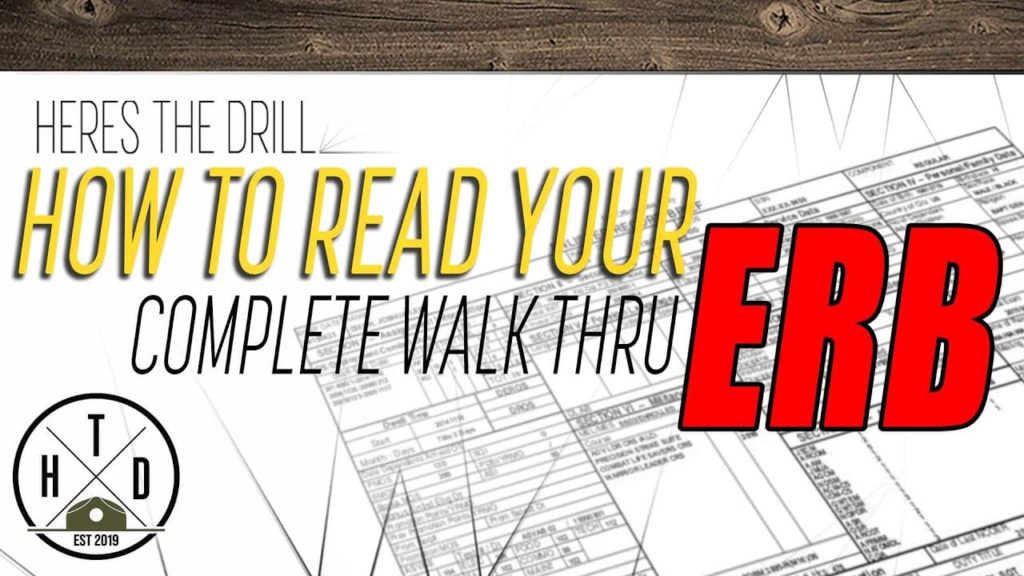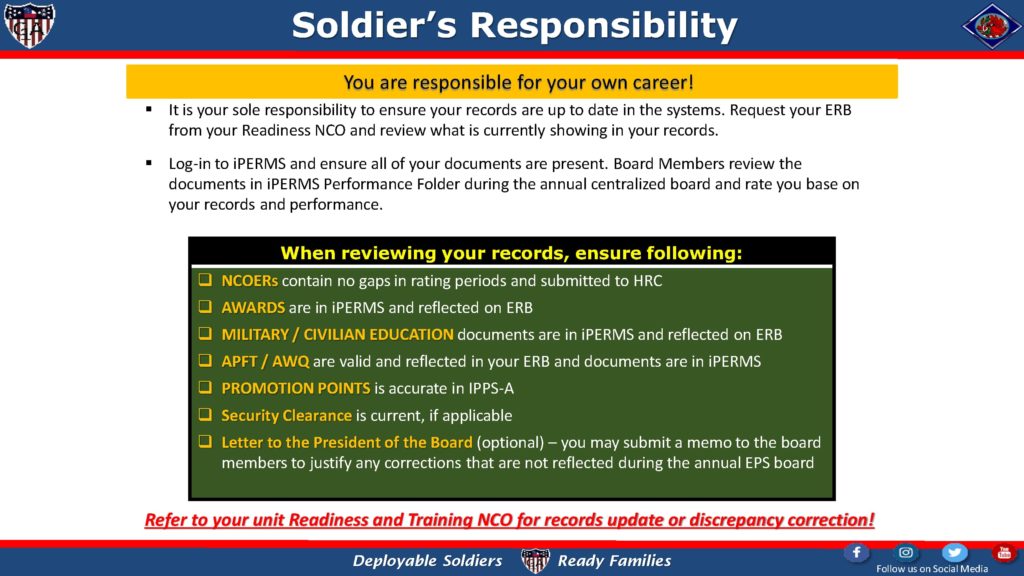Whether you’re a student, a member of the Army, or a general citizen, you might be wondering what the difference between an ERB and an SRB is. In this article, we’ll look at what these acronyms mean, how they’re different, and how to find them.
Whenever a personnel wants to know how to find his Army ERB HRC, there are several ways to get the information. You can either upload it from your device or you can create a link and send it to another person through email. Moreover, you can add text, pictures, and comments to the document. All of these are available in the HRC website. You can also replace the existing sections with new ones.
How do I find my Army ERB?
If you are an officer, you can login to the HRC site by registering a free account. You can use your email certificate to log in and set up a strong password. After that, you can upload the Army ERB file from your device or the cloud. Once it’s uploaded, you can edit, comment on, and highlight the documents. Moreover, you can create a link to save your document for easier sharing.
If you are an SGT, you can update your transactions by clicking the promotions section. SSG, PV2, and SPC transactions are updated at the unit level. If you’re a member of the ATRRS, you can add resident courses through HRC, but you must provide the printout of the course. As a result, you can get promotion points.
If you’re a unit administrator, you can check the veteran status of your personnel. You can also help them build their 2-1/SRB by providing them all the required documentation.
Is Erb on iPERMS?

iPERMS, the Internet Personnel Records Management System, is the Army’s official database. It allows soldiers to review and upload their documents. It is also where new DA 5960 forms are uploaded. However, there are some documents that aren’t allowed in iPERMS. If you find that you have a document that isn’t allowed in iPERMS, you can contact the Army Enterprise Service Desk. It can be accessed by calling 1-866-335-ARMY.
In order to see what the iPERMS can do, you can view individual documents in up to five different folders. The individual documents are labeled with identifiers based on the type of document. You can also highlight individual documents. The documents that aren’t authorized for filing in iPERMS are the ones with multiple Social Security numbers, the last four digits, or documents with DODIDs. The AMHRR (Automated Military Human Resource Record) is also available in iPERMS, but you can only view it in the AMHRR-S version.
iPERMS also allows you to view a Soldier Record Brief. The Soldier Record Brief is a multi-component report that replaces the Officer and Enlisted Record Brief. It will eventually replace the RCMS Automated Record Brief. It has a few more components than the ORB and is used for comparing the ERB/ORB with the LES.
You can view the AMHRR Required Documents list to determine which types of documents are needed to substantiate pay and entitlements on your LES. You can also search for missing documents. To upload a missing document, you can do so by sending it to a unit S1 or administrator, or you can upload it yourself.
How do I access my Erb from home?

Getting access to your ERB HRC from home can be a challenge. However, there are ways to improve your chances of success. Make sure you have your certificate of authorization (CAC) handy. In addition, you should always remember to add entries to your ERB as documentation is made available. This may include a list of military acronyms, the names of commanding officers, and so on.
The best way to access your ERB HRC from home is to buy a smart card. This way, you won’t need to install any software, download any drivers, or sift through the zillions of files installed by Microsoft updates. If you want a more traditional solution, you can configure a desktop application that utilizes a smart card. There are several versions of this software to choose from, but the free version is usually all you need. You can also find a free version of the HRC app, which you can download onto your smartphone.
What does aim2 stand for in the Army?
Basically, AIM2 is an Army version of Tinder. It’s a web-based program that matches officers with units based on their individual preferences. The Army is trying to improve its talent management strategy.
The main purpose of AIM2 is to establish a regulated market-style hiring system. The Army hopes this will help officers get more information about possible jobs and allow them to make better decisions about their career.
Using the AIM2 marketplace, each officer will be able to identify his or her own KSBs, or unique qualifications and then choose from available positions. Then, they can submit their preferences to a career manager at the Officer Personnel Management Directorate. This provides officers with an opportunity to showcase their skills to potential units.
The process is also designed to give commanders a better idea of which officers are available to move. They can then decide whether to match the officer to a position based on his or her experience and place along the officer’s career path.
The first step in AIM recruiting is creating a resume-type profile that describes your skills, experience, and career goals. This helps your unit to better understand you and your needs. Then, you can input additional information about your assignments and billets.
AIM2 also allows the officers to set their own preferences, so organizations can be more precise about which officers they want to hire. It is important for officers to communicate their KSBs to units so they can inventory them effectively. This will help the Army to improve its talent management strategies.
The key to utilizing AIM2 is to be decisive. The more an officer participates, the more likely he or she will be matched with a suitable unit.
Is ERB and SRB the same?
Whether you are in the military or not, you are bound to come across the term Enlisted Record Brief (ERB) at one point or another. This is a fancy acronym that contains a variety of documents detailing your military duties and accomplishments.
The ERB is a great way to showcase your skills and accomplishments, but there are other places to put your best foot forward. If you’re lucky, your DD214 is available for a couple of months after you’ve left the service. Regarding promotions, the BSEP will likely hold you back from reclassifying to something more interesting. However, it’s probably time to make the move if you’re a senior.
The biggest challenge in updating your record is making sure the relevant information remains accurate. For example, you’ll have to add the obligatory entries to the ERB for each job you’ve had in the military. You can send your records to the Purepost portal or upload a PDF version to the iPERMS website.
If you’re looking for the most streamlined document workflow, you may want to try a service such as signNow. This web-based application makes document management a breeze by allowing you to easily create, fill out, and submit your documents without ever having to log in. Using this software can save you a lot of headaches and ensure you get the most out of your military career.
The record is a big deal in the Army, and getting your records in tip-top shape is a big part of the job. The record is also a good time to learn more about the Army’s various training programs and services.

